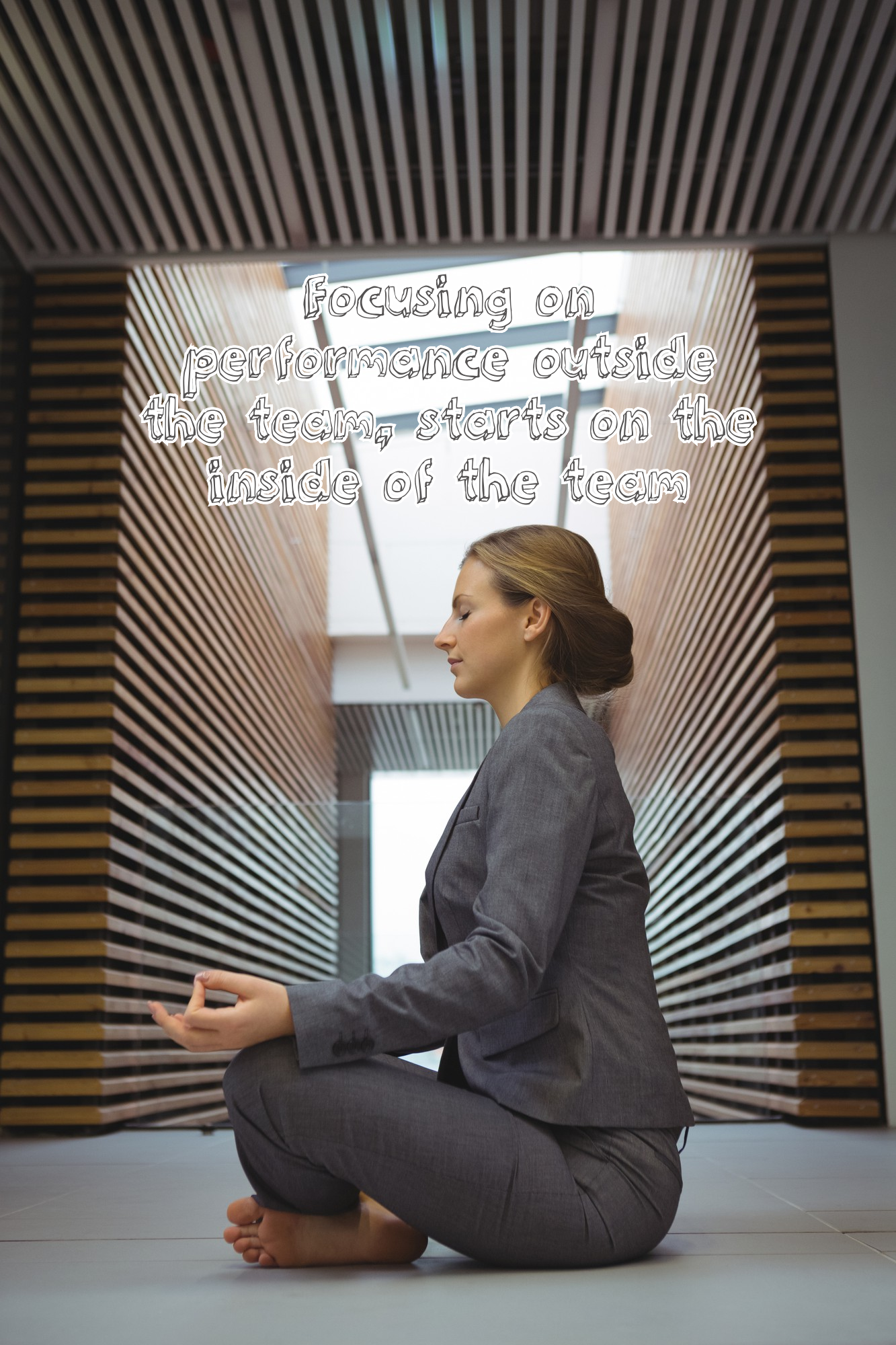
In my blog about individual coaching journey goals, I spoke to two approaches I take in my practice and speak to other areas of thought in coaching lore.
In short, I believe that defining who we want to be in the present and future as an anchor for further discovery, seems to be more valuable that defining comprehensive and detailed goals or outcomes up front. Although I am clear in saying that the latter holds value as well. Given a preference, and given that the former allows inspection and adaption along the way; I explained why I prefer the latter approach.
Although there is value in defining goals up front, in my practice I value foci that work with ways of being more
Interestingly, team coaching presents a different series of challenges. The invisible and unseeable that is inherent in all coaching work, seems to be more pronounced in team coaching literature and training – for good reason. Let me clarify a few things first:
In Team Coaching the unseeable is more pronounced
When I refer to the invisible I refer to the inner world of the client that remains mostly inexplicable and barely glimpsed by the coach in a journey. In individual coaching journeys, the inner world of the client is both known and unknown to the client – and hopefully, becomes better understood, acted in, lived in, experienced and felt along the way. It is always still complex, but the complexity is reduced by the fact that there are two people conversing. We cannot work with something that is unnamed, unknown, unseen – when it is named, it can be worked with, understood, acted upon.

Perhaps it is ignorant of me to compare and name one as more or less complex than the other – and I say this with awareness that it may very well be – team coaching seems to have a pronounced focus on working with the inexplicable or unknown because the knowledge of what it is, is not known or experienced by one person.
The more people converse, the more pronounced the work on the unseeable becomes
Since we simply don’t have the means to read minds, yet, or always feel each other’s feelings accurately and completely – sense making in this domain requires discourse. The more people in discourse, the more complexity and layers we add to the process of making sense of the inexplicable. The very act of doing so also always already changes the nature of what is unseen, unheard, sensed and discovered.
The second thing to clarify is that what is inexplicable is the world of beliefs, assumptions, values, perspectives, past experiences, learnings, sense of self, sense of Other, sense of belonging, fears, hopes, and all the flavours, textures, temperatures, colours and sounds that make up the recipes for relational systems.
In team coaching there is the dynamic of the relationship with self, with each individual in the team and with the team identity itself and then, the relationship between the team and the other entities it serves or is served by. In comparison to individual coaching, we may argue that there is at least difference in types of complexity – whether or not there is more or less of it or not.
Although team coaching works with the same elements of the unseeable than are present in individual coaching, how we work with them and their impact on goal clarification seem very different.
How do we, then, make sense of whether to address upfront goals for a team coaching journey or not? There may be more dimensions than the two I am placing in binary position in this analysis, but for illustrative purposes I juxtapose the approach to work emergently – in a general direction and working with great specificity towards specific outcomes.
What then, are our assumptions about team coaching?
I am honest in saying that so far in my team coaching education, research and experience I can not seem to come away from the common problem of having to do collective sense making in order to work with the entity that is the team. This seems to be inescapable. So, let us assume that this remains a tenant of the work.


If both approaches depend on collective sense-making, then inherently, both processes will deal with the complexity of the team, its individuals, their interdependent relationships as individuals and the relationships the team has with other entities. Both approaches then also have to deal with the inexplicable. The added dimension seems to be what the brief is from the sponsor and the culture of the organisation or larger entity in which the team belongs (government, community etc). The way in which goals are approached seems to be endemic to the relationship between the team and the larger entity (organisation for simplicity sake).
The organisation may want to address very specific team behaviours, or bring about aligned expression of efforts and ways of working together that aligns to an organisational ethos or expectation. This seems to speak, then, to defining detailed goals and outcomes up front, while paying less or little attention to the emergent, at least at the outset of the journey. Another approach may be to have a general direction of focus, while allowing for emergent foci to lead the direction of the team’s coaching journey. The defined outcome approach seems to refer to a focus on “ways of doing”, while the emergent approach seems to reach into the inexplicable or essence of the relational system to work with their way of being together.
Is working with way of being versus way of doing mutually exclusive?
It is not to say that the first approach cannot reach into essence or foci in ways of being; or that the second cannot speak to details of who needs to do what by when; role clarity; or how the team communicates. But, there seems to be less tolerance in the first approach to the exploration of inexplicable than what may be present in the second. I have learned, through experience, that my judgements along these lines are almost always wrong, and acting on them almost always demands realignment somewhere down the path. So, which approach do we take?
Let me first express that there are several possibilities here. My inner Business Analyst from a past life is challenging me to be specific in defining that one does not determine the other and that there are multiple possibilities at play.
The below charts my current hypothesis.
| Column 1 | Focus on ways of doing | Focus on ways of being | Focus on ways of doing and ways of being |
|---|---|---|---|
| Define detailed goals up front | Ways of being may be unchartered territory; judged as fluffy or vague; possibly a culture that values outcome and output more than meaning and relationship. Tend to seek results, milestones, actions, agreements, certainty. Less tolerance for emergence, difference, complexity or uncertainty. It may be that the changes are not long lasting and resilient to changes in the relational dimensions or circumstantial complexity for example. | May be deep in meaning and value sense making, democratic discourse and expansive or comprehensive analysis up front. Task uncertainty and challenge with accountability may be present. How we are together may be more important than what we deliver, or the consequences thereof. Although learning and insight may lead to development of ways to deal with a specific dynamic, the team may need to learn about What to do and How to do this when faced with complexity of variability | There may be awareness that both skill and relationships need to be focused on. Challenge may lie in what to focus on. There is hopefully a call on everyone to accept reality, rate of change, realistic change. If not, there may be complexity and stuckness in working in both what needs to change and how we need to be. |
| Work emergently | Calls on people to develop communicative competency, high levels of self awareness and effective feedback cycles to deal with emergent work, immediately. The focus is on behaviour, performance, skill and performance development. The assumption may be that if we can work better together, then we might be better together. | The focus may be on personal development and the relationship(s) of the team and its members. The assumption might be that if we are better together, everything else will fall into place. | Working emergently may increase the amount of work in progress, diluting focus while there may also be awareness that both doing and being need to be worked on by the team. If managed constructively, each emergent issue can be addressed in turn. This may tend towards a longer coaching journey, or one that has moments of intense activity and moments of integration and application |
| Both upfront goals and emergent work | This may lead to achievement of goals in a more efficient manner, with resilience to change and longer lasting results – on a narrow scope.
Some new challenges may be resolved by the team, based on their learning of ways of being and doing; while other challenges may require more work. |
There may be uncertainty and hesitation around the what and how, the real world application and how to move from collective sense making, to creation and reification. Skill and competency may emerge from within the team over time and may not be resilient when under pressure. | If managed constructively, although it may tend towards a long term journey, with deep and slow work; demanding long term commitment from members – the team, organisation and individuals stand the chance to develop resilience, long lasting results and the ability to bring about change themselves. |
I will again be honest in saying that I often do not know which approach to suggest when asked by a client, and find that many clients do not know either, when presented with a choice. Yet, other clients choose one with a great deal of certainty and determination and this tends to leave me with a question around what my responsibility is as a coach to the client to reveal or name observations about the consequences of these approaches as they arise – or simply to honour the decision in service of their chosen approach.
I’ll be honest in saying that I simply do not know a lot of the time
There is no right or wrong, and I choose to leave the client at choice, in all instances making possibilities and awareness of possibilities available to them when they agree to hear them. My preferred approach is to work with both defined outcomes up front that focus on ways of being (essence) and ways of doing (physical outcomes, skills, practices and evidences) as well as emergent work that may align to the original foci, or lead in a different direction – and at all times, leaving the client at choice.
There is no right or wrong, only choices and consequences!
I have noticed that some team coaching models insist on one approach in favour of the other. The story I make up about this is that it may be because the model itself is famed or framed for a specific type of system and type of work – deep transitional work for example may not be the same as immediate intervention and fast action work. I also acknowledge that while any team coaching may, and rightly should (According to the ICF and EMCC team coaching competencies) reach into the team’s way of being and into the inexplicable, some approaches do not favour working from there as a source as much as others, or linger there as long as others.

So, what am I saying?
Team coaching seems to find success in both working with emergent issues and pre-defined outcomes and working with ways of doing and ways of being, which seems to be largely influenced by the interdependent nature of the relationship between the team and the larger entity in which it belongs. Each approach has its benefits and detriments and like, with all systemic work (which is the fundamental nature of team coaching), there is no right or wrong – only choices and consequences.
The art and science of this seems to be in the domain of awareness, collective sense making, contracting between coach and client and leaving the client at choice. This demands of team coaches to be aware of these dimensions, and skilled in making sense with the client (both sponsor and team) on where they are, who they are, what their work is, and what choices they have made having led to what outcomes.

